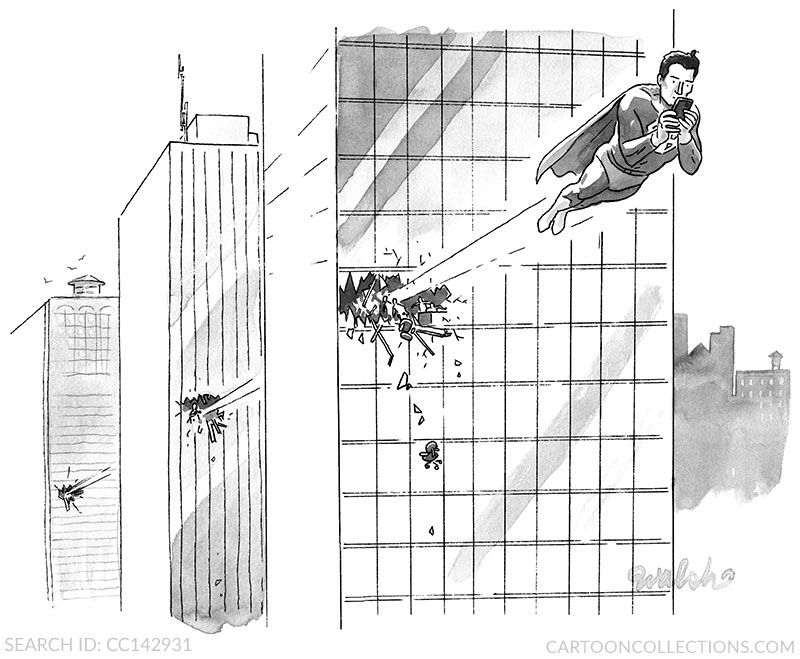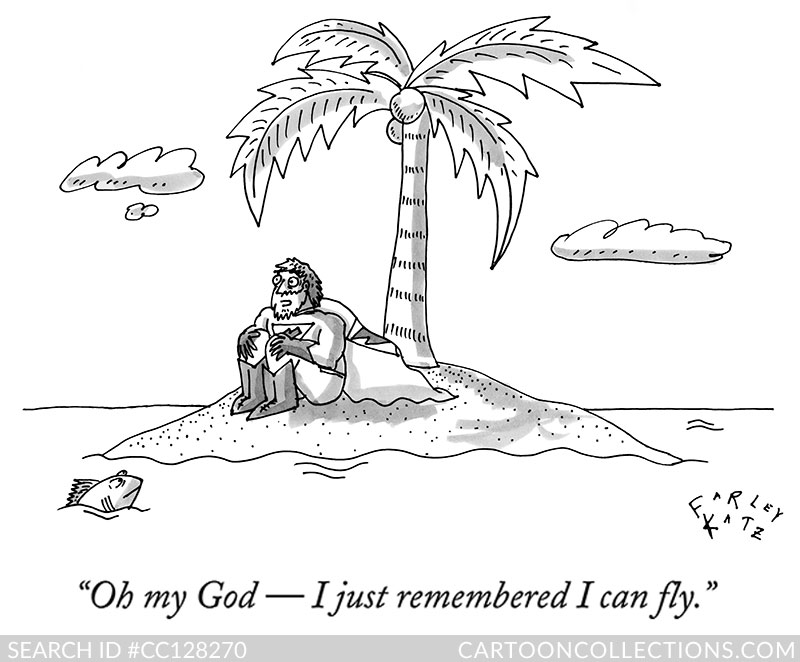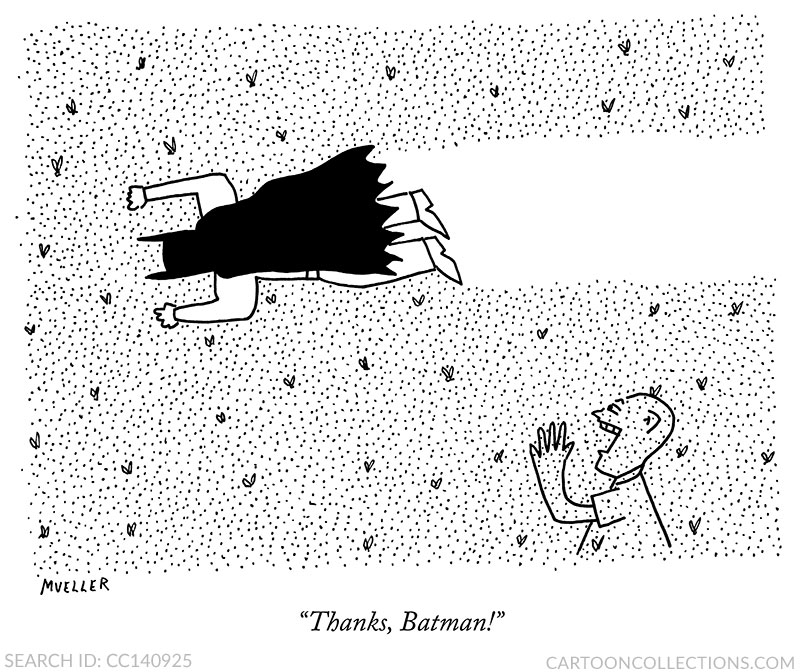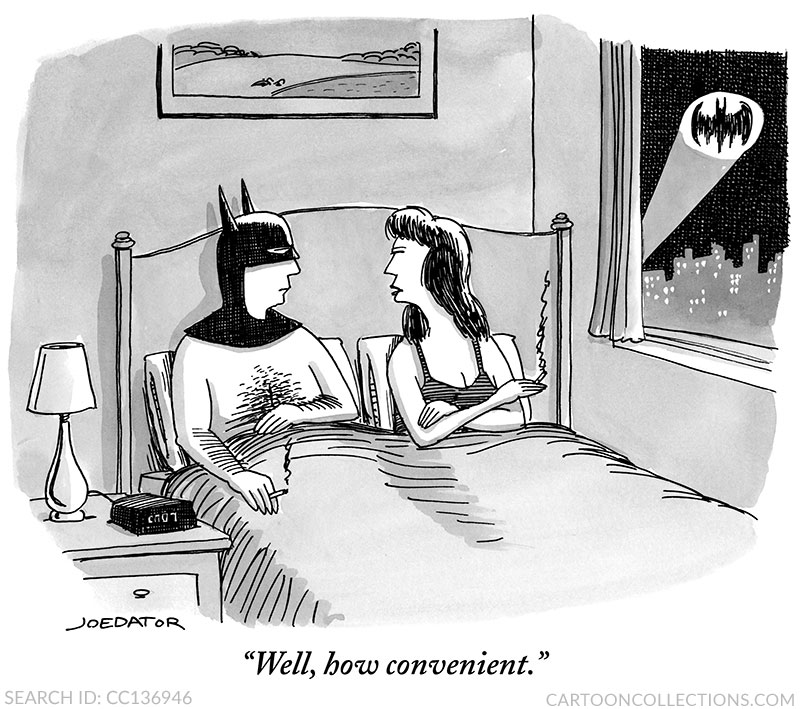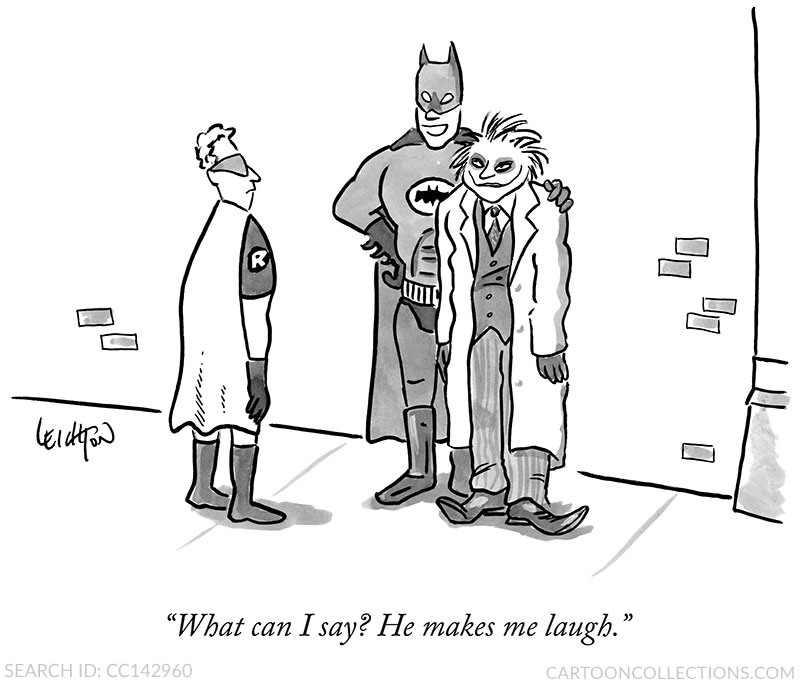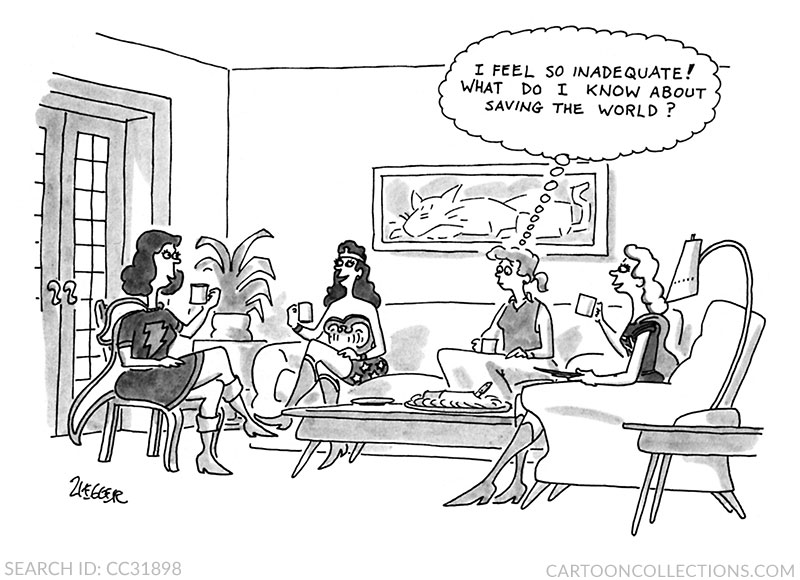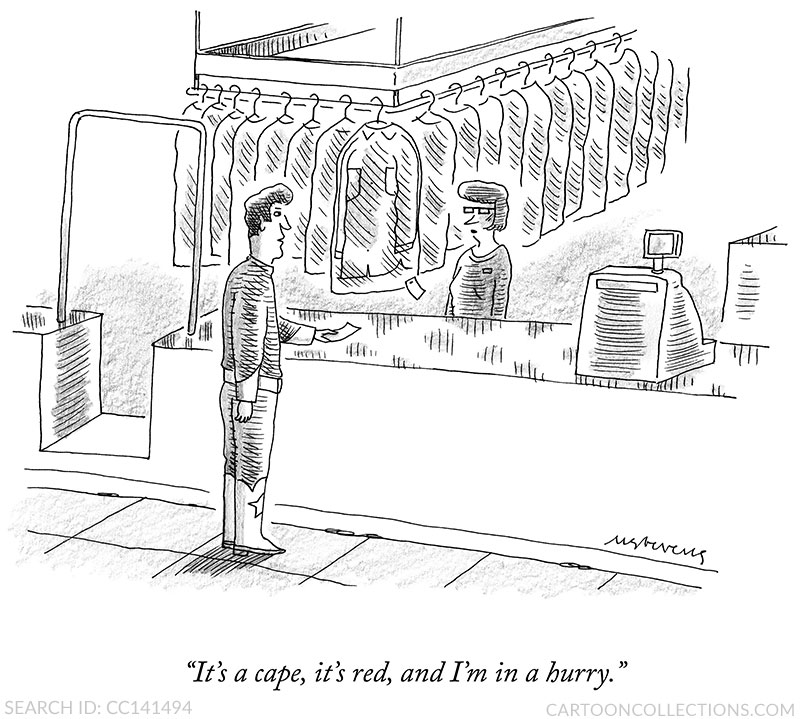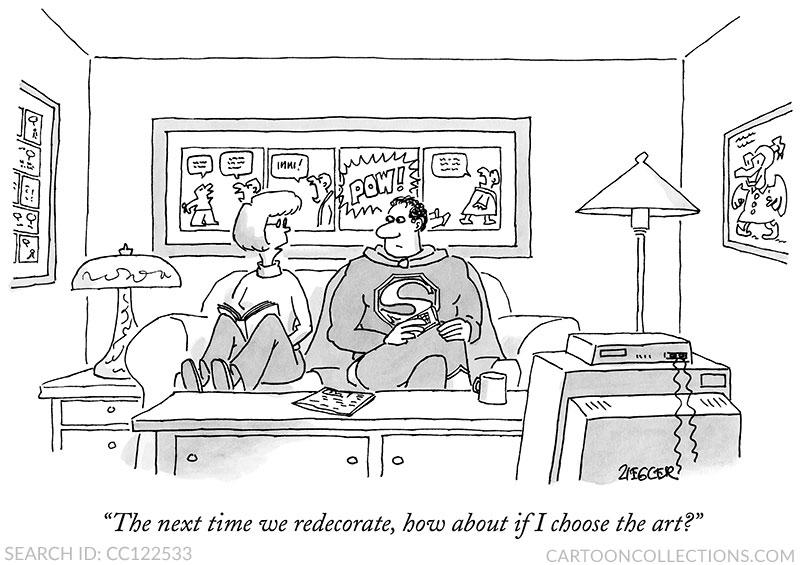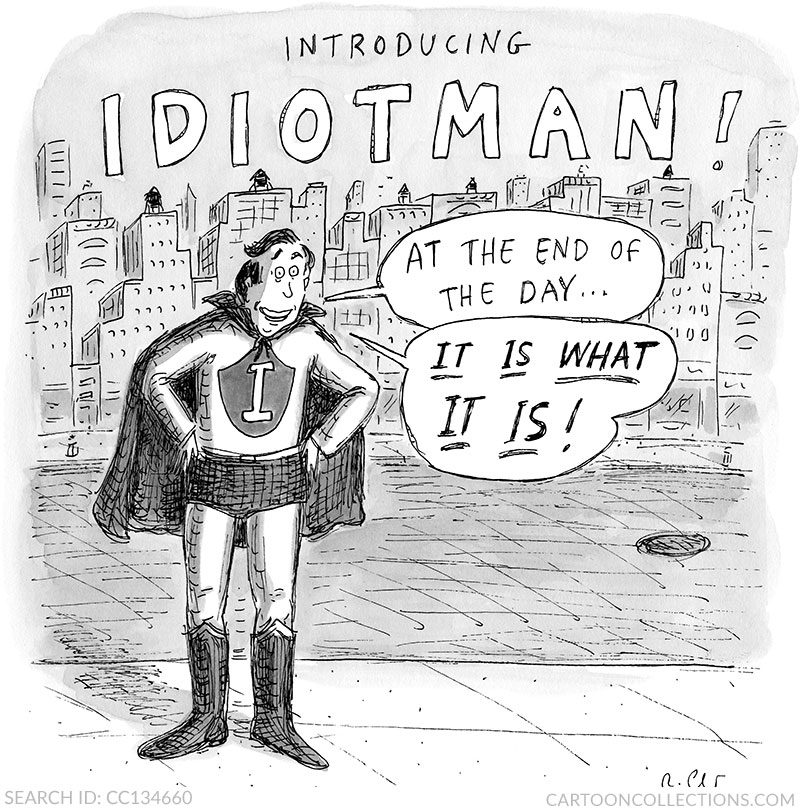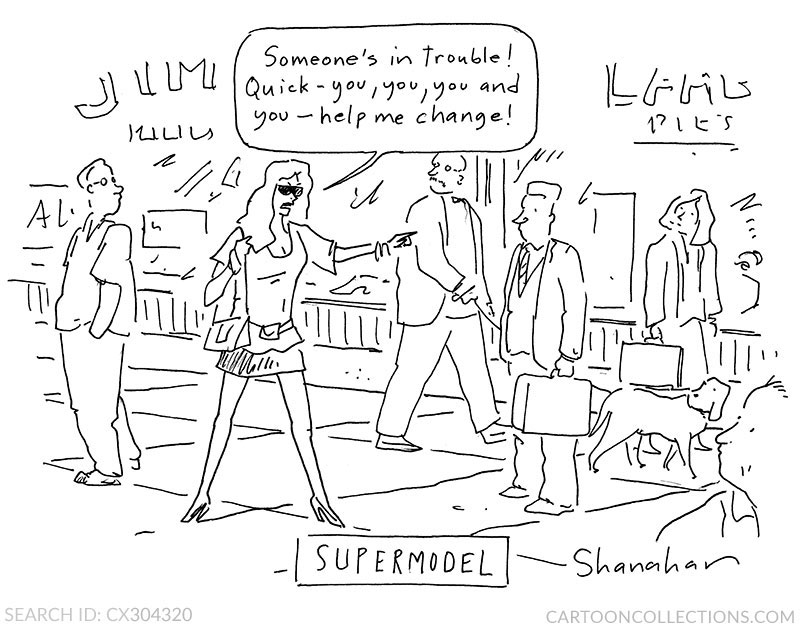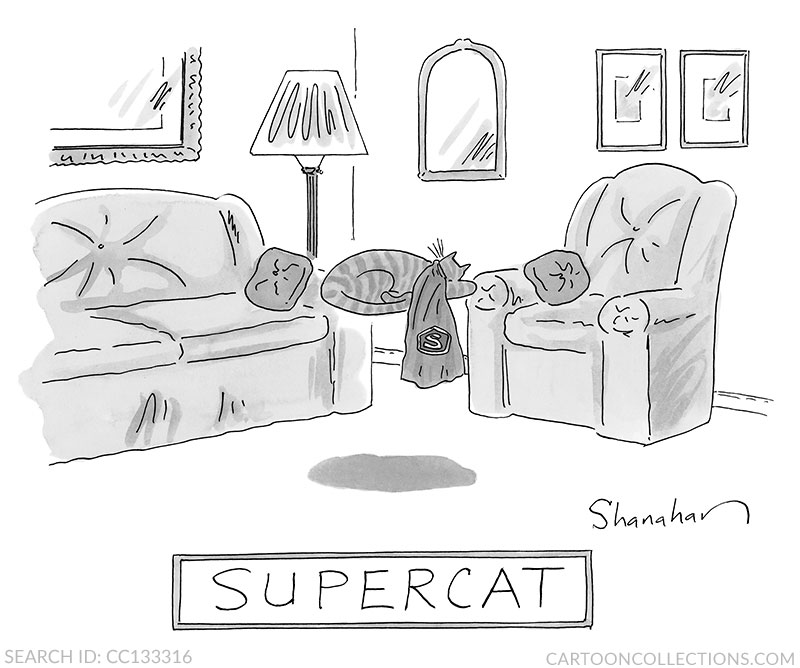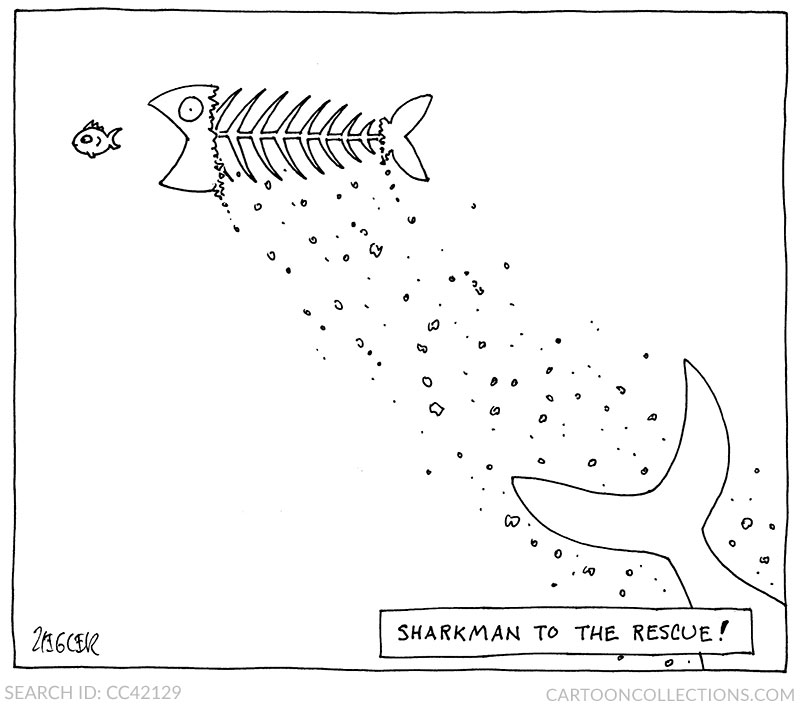 Cartoon critics Phil Witte and Rex Hesner look behind gags to debate what makes a cartoon tick. This week our intrepid critics take a look at superheroes.
Cartoon critics Phil Witte and Rex Hesner look behind gags to debate what makes a cartoon tick. This week our intrepid critics take a look at superheroes.
What is it about superheroes that make them such fun cartoon characters? They’re faster than a speeding bullet, can leap tall buildings in a single bound, etc., but are they really much different from us regular folks? Do they wash their own costumes? Do they hang out in superhero bars? These are the sorts of issues cartoonists like to explore.
First, let’s take a look at what sets a superhero apart. Obviously, they have superpowers, like the ability to fly. In a dramatic visual image—no caption needed—Liam Walsh’s Superman can fly and text at the same time, with predictable results.
BUY THIS CARTOON
Not all superheroes have super brain power, as seen in this Farley Katz cartoon, which combines the hoary desert island setup with a generic flying superhero to create a unique gag:
BUY THIS CARTOON
Batman may be the superhero who most successfully straddles the comic book world and the cartoon world, based on the many cartoons he appears in. P.S. Mueller uses artistic license in bestowing the power of flight on the Dark Knight to arrive at a great gag.
BUY THIS CARTOON
Gotham City relied on the Bat-Signal to summon the Caped Crusader, but Joe Dator suggests that Batman may have occasionally taken advantage of it for his own not-so-heroic reasons.
BUY THIS CARTOON
The cigarettes indicate that this is post-coital call to action. Perhaps she shouldn’t have expected better from a guy who keeps his mask on. In these cartoons, the cartoonist defies our expectations by presenting superheroes as no better than us, and even as weak and ridiculous as us.
What’s a superhero without a villain? The bad guy must be so venal that he threatens to overcome the superhero. They are locked in an eternal struggle, sometimes to the death … or could they be friends, even lovers? Could the Joker ever supplant Robin in Batman’s affections, as in this Robert Leighton cartoon?
BUY THIS CARTOON
Superheroines are finally getting their due. Jack Ziegler was ahead of his time in recognizing their superhuman powers. Mere mortal women can’t even have them over for snacks without judging themselves.
BUY THIS CARTOON
Ziegler’s cartoon highlights how comic book heroes are not like us. Mick Stevens takes a different tack, answering the question we raised earlier about whether they do their own laundry. Certainly not, but they still have to wait at the cleaners, just like us.
BUY THIS CARTOON
In another cartoon by Jack Ziegler, we get a peek inside Superman’s home, as well as his domestic life, which in most respects resembles our own. Ziegler’s Superman has the de rigueur cape and tights, but nevertheless resembles the typical Zieglerian nebbish.
BUY THIS CARTOON
Setting superheroes in everyday scenes brings them down to earth. Roz Chast goes further by taking the concept of superhero as someone who is superior to us and turns it into someone who is less than us—an anti-superhero:
BUY THIS CARTOON
Idiotman doesn’t really need a costume. He can just open his mouth.
And then there are people who have a superior attitude but no super powers, as in this Shanahan cartoon:
BUY THIS CARTOON
Shanahan even applies the superhero conceit to a certain household pet not typically associated with saving the world, or even moving much, for that matter:
BUY THIS CARTOON
We let Jack Ziegler have the last word, with another cartoon that combines the comic book world with the animal world. In contrast to the dozing Supercat, Sharkman flashes away before we see him, leaving only bits of filleted fish detritus.
BUY THIS CARTOON
So rapid the rescue, the targeted fish is still staring with mouth agape after the fact, and its would-be prey is oblivious of its near demise. Witnessing this savior of the deep, and in light of our own perilous times, we can only cry out, “Sharkman, save us!”


